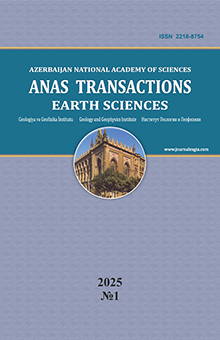№ 1,
2021
Download the article
Assessment of indoor and outdoor radon concentrations in Talysh, Azerbaijan
Institute of Geology and Geophysics, Azerbaijan National Academy of Sciences 119, H.Javid Ave., Baku, Azerbaijan, AZ1143: E-mail: radiometry@gia.science.az
Summary
A-
A+
The article describes the results of modern radiation monitoring of the environment conducted in the Talysh region of Azerbaijan. Radiometric studies covered five districts of the Talysh region: Masalli, Lyankyaran, Astara, Yardimli and Lerik. Radiometric studies have monitored the level of radon concentrations in residential areas and in water. Measurements of radon volume activity in residential buildings were carried out in settlements of the studied region.The radon volume activity in residential areas was measured with radon Scout and radon Scout Plus radiometers from SARAD. The volume activity of radon in water was estimated using RAD7 (DURRIDGE) radiometers. A MKS-AT1125 dosimeter-radiometer was used to determine the radiation level. Indoor radon volume activity in the Talysh district ranges from 20 to 660 Bq/m3. Based on the data obtained, maps of the distribution of radon volume activity are constructed separately for each region. According to these maps, the Lerik region, known for its long-livers, is characterized by relatively high levels of radon. Studies have shown that there is a definite correlation between radon levels in dwellings and life expectancy. The radon content in thermal waters varies very widely from 8.34 Bq/l to 93.3 Bq/l. According to sanitary and hygienic standards for radon content, thermal waters of Talysh are not dangerous for people’s health when taking baths and using them as drinking water, except for the Buludul source in Yardimli district. The content of radon in the water of this source exceeds the maximum permissible concentration for drinking water (60 Bq/l) by more than 1.5 times.
Keywords: radon volume activity, radon danger, Talysh, thermal waters, people’s health, life expectancy
REFERENCES
Calabrese E.J., Baldwin L.A. Radiation Hormesis and cancer. Human and Ecological Risk Assessment, Vol. 8, No. 2, 2002, pp. 327-353.
Cohen В. Relationship between exposure to radon and various types of cancer. Health Physics, Vol. 65 (5), 1993, pp. 529-531.
Luckey T. Physiological benefits from low levels of ionizing radiation. Health Physics, Vol. 43, No. 6, 1982, pp. 771-789.
Aliyev Ch.S., Feyzullaev А.А., Baghirli R.J, Мahmudova F.F. Regilarities of radon distribution on the territory of Azerbaijan and controlling factors. Geophysics, No. 1, 2017, pp. 72-73 (in Russian).
DOI:
10.33677/ggianas20210100053
